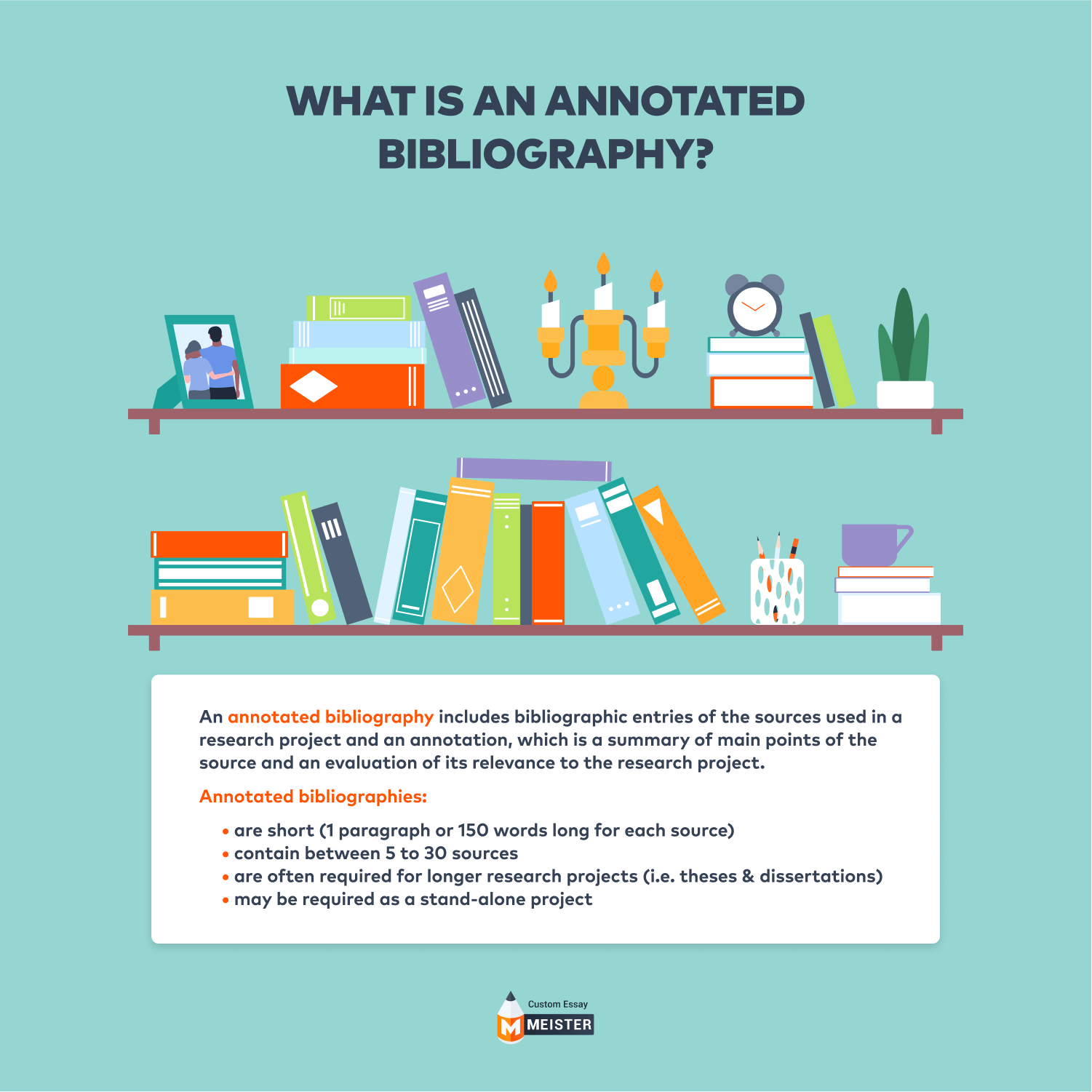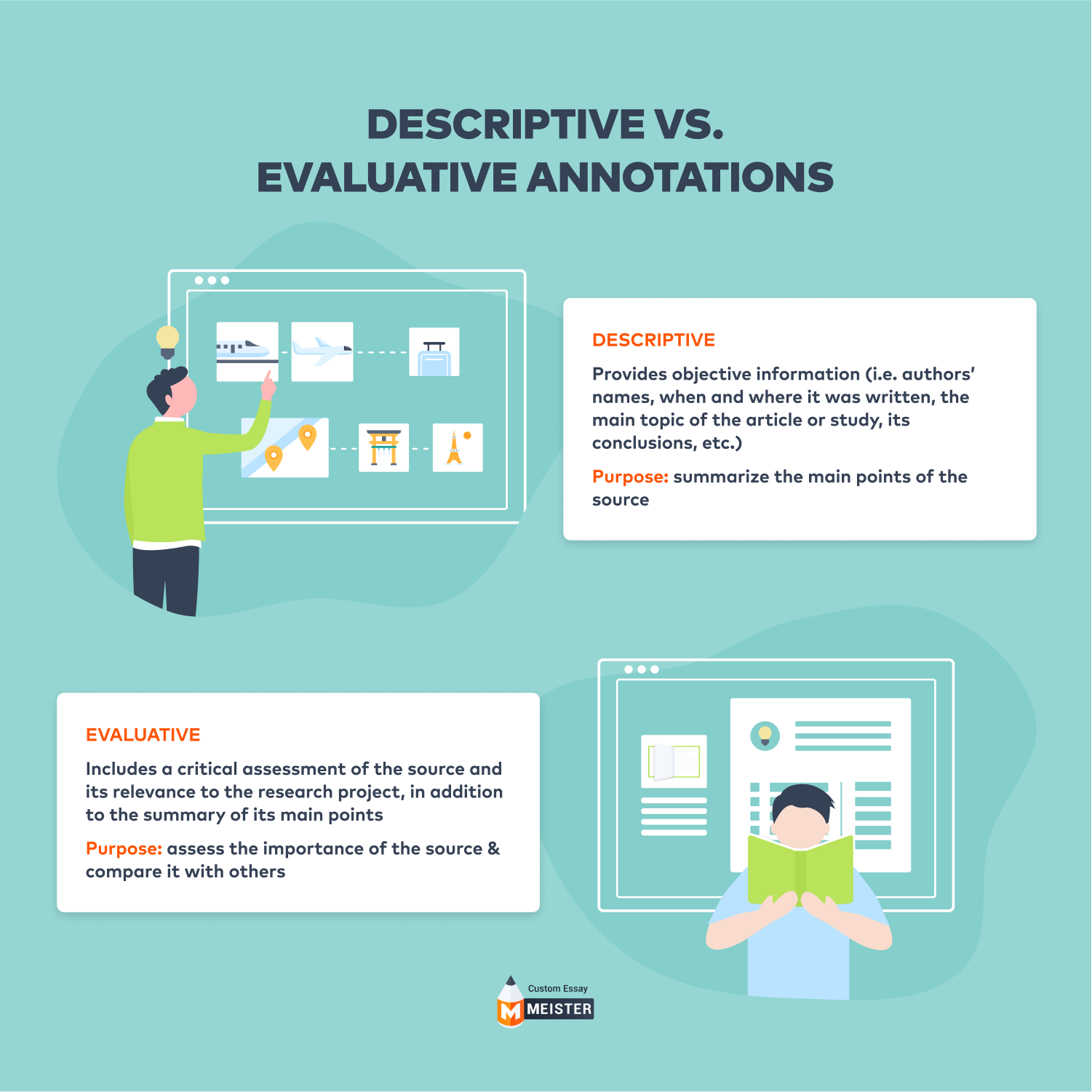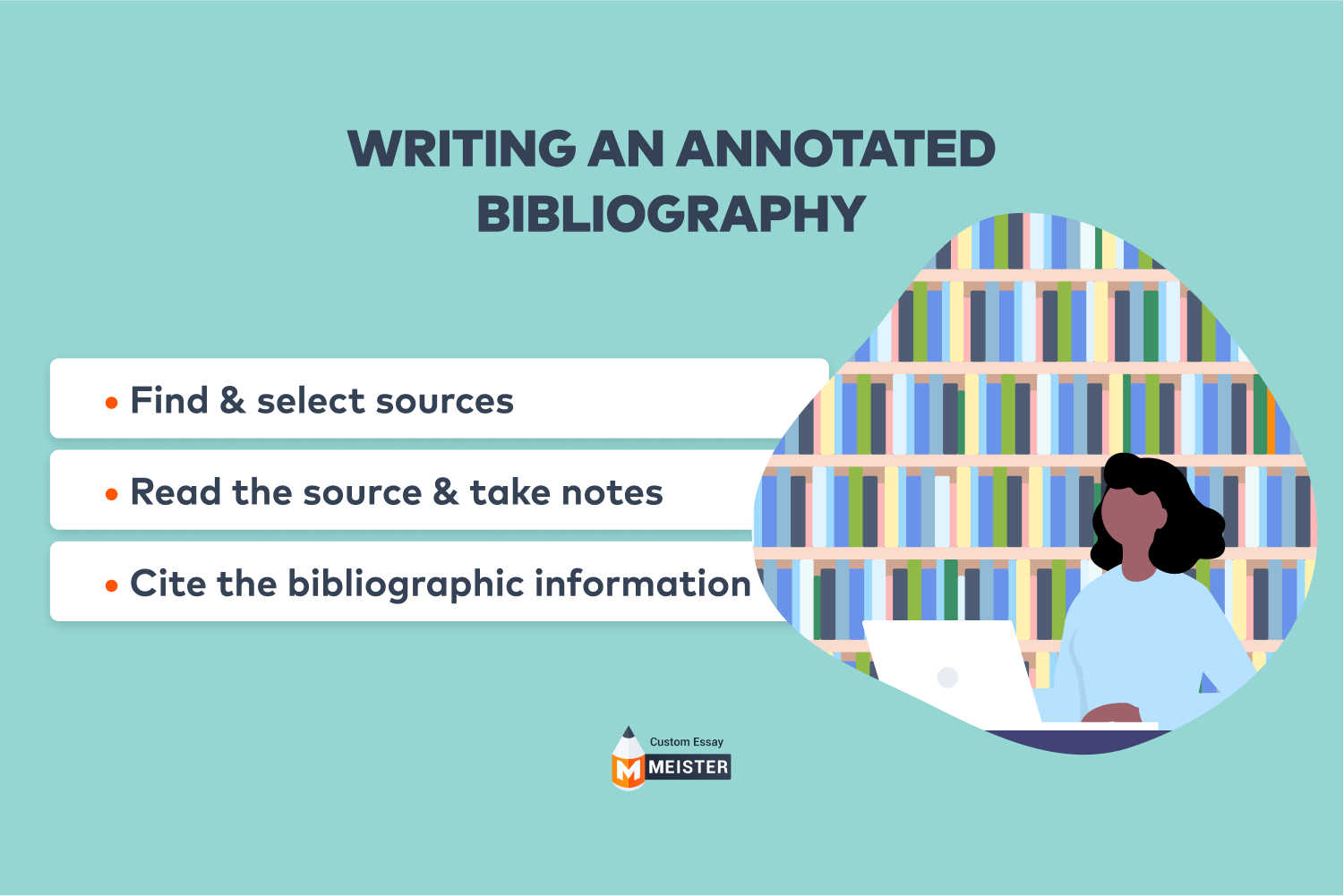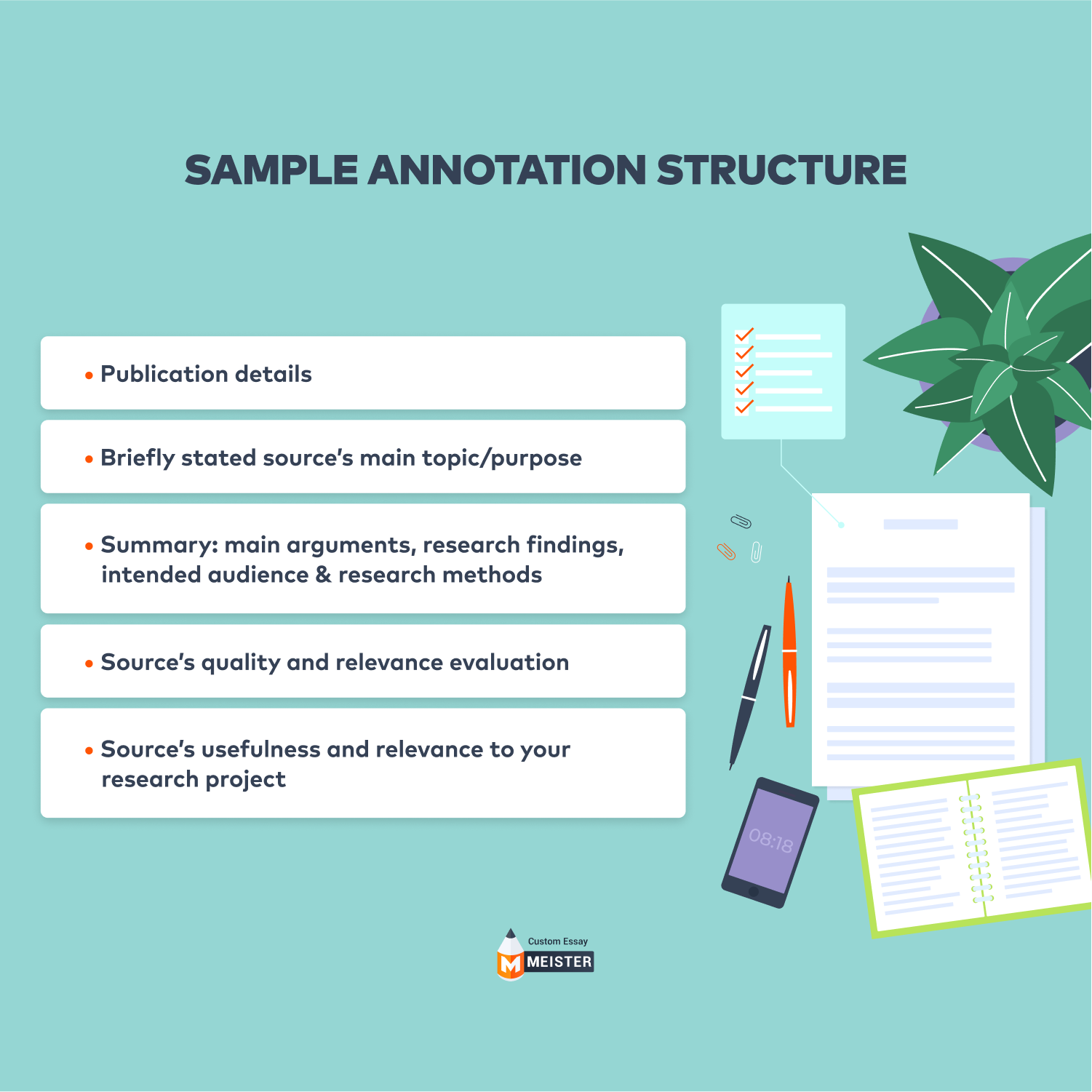Tips on How to Write an Annotated Bibliography with Examples
Anyone who has written a research project has been asked to write an annotated bibliography. Although this is a common requirement in tertiary and postgraduate education, not many know exactly how to write a good research paper annotated bibliography. Let us tackle this requirement and the tips on how to write an annotated bibliography like an expert.
Annotated Bibliography: Definition
An annotated bibliography is an expanded version of a bibliography. It includes bibliographic entries of the sources that will be used in a research project and an annotation. The annotation provides the important details and main points of the source and an evaluation of its relevance to the research project.
Annotated bibliographies are required for longer research projects, such as theses and dissertations. However, these may also be required as a stand-alone project to help the researcher gain a better understanding of a potential research topic.

Annotations are short: usually, only 1 paragraph or 150 to 300 words long for each source. However, this does not mean that the paper is short. Depending on the length of your research paper, you may be required to find somewhere between 5 to 20 or even 30 sources. Indeed, this project requires hard work, considering you need to find sources, read each one of them, format the bibliographic entries, and then write a paragraph on each of them.
The 2 Types of Annotations
Another consideration for compiling a bibliography is the type of annotation you need. Here are the 2 main types:
Descriptive annotations
This type of annotation focuses on describing the source. In other words, it provides objective information, which includes: names of the authors, publication details, the main topic of the article or study, its conclusions, why it was produced, and how it was provided to the public. The main purpose of a descriptive annotation is simply to summarize the main points of the source.
Descriptive annotations are helpful for organizing sources. With such a description, it will be easier for the researcher to find the relevant source for a claim or fact while writing.
Evaluative annotations
Sometimes called “critical annotations,” this type includes a critical assessment of the source and its relevance to the research project in addition to the summary of the main points and conclusions. You will need to assess the importance of the source (usually in comparison with other sources), the author’s bias (if any), their qualifications or any conflict of interest, and the quality or accuracy of the information presented in the study.
Knowing which type of annotation your professor is expecting will make the writing process much easier.

Importance of Annotated Bibliography
The annotated bibliography benefits both the researcher and the reader. It plays an important role in enriching current existing literature. For the researcher, this document encourages them to read each article or book critically, thereby allowing them to have in-depth knowledge and understanding of the topic. Furthermore, it helps them organize their sources based on their relevance to the research topic. Staying organized when you have upwards of 10 sources is one of the keys to writing research papers faster.
Students will benefit greatly from this type of paper. It helps refine their research and critical thinking skills by encouraging them to engage with each source, process them, and write an evaluation. It also encourages them to be aware of the broader discussions in their field, which should inform their research trajectory. This type of paper provides numerous learning opportunities for students and professional researchers alike.
As mentioned, this type of project also serves a role in the greater conversation in the field. It allows your readers to check out any article or topic that they are interested in. Your annotation gives the reader the relevant information to help them decide if a source is worth checking out. In some cases, it may help the reader to assess the quality of your essay. It reveals to the reader the type of sources you used and establishes the validity of your research.
As you can see, the annotated bibliography is not merely something professors assign. It is not only relevant in the classroom, but rather has an important role in the overall field of research.
Writing the Annotated Bibliography Citation
There are a few steps to writing an annotated bibliography: finding and selecting the right sources, reading them, and finally, the actual writing.
1. Finding and selecting sources
The quality of your annotations—and by extension, your research—depends on the sources you select. You will need to find sources that are credible and useful to your research. Read this guide on how to evaluate sources.
2. Reading the source
While reading the article or book, it would help to take down notes. This will help you keep track of important aspects, such as their theses, conclusions, methodology, and your thoughts on the accuracy of the information they presented. Taking down notes will help make the writing process easier.

3. Citing The Bibliographic Information
Depending on your field of study and your professor’s preferences, you may use Harvard, Chicago, MLA, or APA annotated bibliography format. Verify which academic citation style to use and follow its formatting correctly. Refer to CustomEssayMeister’s guide on each citation style to make sure your format is clean of errors: MLA, APA, Harvard, or Chicago. Here are annotated bibliography examples for each citation style:
MLA
Mackel, Katharine A. “Fascism: A Political Ideology of the Past.” Inquiries Journal, vol. 2, no.11, 2010, p. 1.
APA
Kang, H., Kim, S., Bae, K., Kim, S., Shin, I., Yoon, J., Kim, J. (2015, April). Comorbidity of depression with physical disorders: Research and clinical implications. Chonnam Medical Journal, 51(1), 8-18. doi: https://cmj.ac.kr/DOIx.php?id=10.4068/cmj.2015.51.1.8
Harvard
Farhodovna, AM & Abdishukurovna, EM 2021, ‘Application of the law of conservation of energy in economics’, The American Journal of Applied Sciences, vol. 3, no. 1, pp. 93-103
Chicago
Kail, Peter. “Nietzsche and Hume: Naturalism and Explanation.” Journal of Nietzsche Studies 37 (2009): 5-22.
Note that you are not required to provide in-text citations for MLA and APA citation annotated bibliography, as well as other citation styles because it is clear where the information you write about is from. Plus, the researcher is expected to paraphrase everything—in other words, to use their own words. However, if you are citing another article or including a direct quote, you should provide an in-text citation.
How to Write an Annotated Bibliography
In one or two paragraphs, you should be able to provide a summary of the source and provide your evaluation of its relevance to your research. To help you accomplish this, here are a few questions to answer:
For the annotated summary:
- What is the main thesis?
- What topics does the article or book focus on? What does it say about these topics?
- What method is used to investigate the research topic?
- How does the author use theory to interpret evidence?
For the evaluation:
-
What unique features of the source are relevant to your research? Some aspects to consider:
- Whether it opens up new ways of seeing the problem you are also investigating
- If the source uses a theoretical framework or a key concept you are interested in
- If the source presents data or evidence that will supplement your research
- Are the arguments presented by the source valuable?
- Are there limitations to the study?
- How does this article/book affect or shape your own argument?
- How does the source relate to other relevant sources?
- How can you use this article/book in your research paper?
When evaluating a source, it would help to consider how materials are assessed in your field. Apply those to your evaluation to arrive at a comprehensive and well-informed annotation.
Structuring Your Annotation
Answering the questions above provides you with the preliminary information or ideas that will now serve as the foundation of your assessment. However, answering each one separately will most likely lead to an incoherent chunk of text that exceeds the word count. You still need to process your answers into concise sentences.

Here is an example of how the annotation should flow:
- Publication details
- A short statement on the main topic or purpose of the source
- A summary of the main arguments, research findings, intended audience, research methods, and special features
- Evaluation of the quality and relevance of the source to the bigger picture
- Statement/s about its usefulness and relevance to your research project
These are the basics you need to write a good annotation. Do not hesitate to implement other writing and editing techniques. Treat this requirement like any other essay that needs to be polished before submission.
Here is an annotation example for an MLA annotated bibliography:
Mackel, Katharine A. “Fascism: A Political Ideology of the Past.” Inquiries Journal, vol. 2, no.11, 2010, p. 1.
In this article, Mackel defines fascism and compares the ideologies of fascist regimes from the past, namely the Italian Fascist Party and the German Nazi Party with modern extreme right parties. Mackel postulates that modern extreme right parties are not fascists because contemporary conditions are not conducive to the existence and proliferation of true fascism. The article then delves into conditions that enabled the aforementioned fascist parties to proliferate and reflects on how future conditions may enable fascist movements.
Having written extensively on the historical and modern issues of democracy, Mackel has sufficient background on historical analyses of political ideologies and movements such as fascism. This article provides an in-depth, contextualized definition of fascism enriched by the discussion on the enabling conditions for fascism. Furthermore, the comparison of fascist parties with contemporary political ideologies sheds new light on the latter, allowing for better discussions on their allure to certain demographics.
Deadline Approaching?
We work 24/7 and we are affordable (from $13.95/page). Our writers, managers and support agents all have been involved in academic ghostwriting for years. We can assist even with the most difficult writing assignment under time constraints.




Additional Tips for Writing an Annotated Summary and Evaluation
The idea of compressing so much information and ideas in a paragraph is quite daunting. As such, you need to carefully craft each sentence and structure your paragraph strategically. Here are some other tips to help you produce a concise annotation:
- You do not need to say whether you liked or disliked the article or book. You need to present an objective evaluation.
- Read the source in its entirety before writing. Reading the abstract or simply skimming the contents is a sure-fire way to write an inadequate annotation.
- While direct quotations are not forbidden, they should be used sparingly and they should be absolutely relevant. Paragraphs should be brief, so unnecessary quotations are not welcome.
- Always use your own words. Practice proper summarizing and paraphrasing techniques . Avoid all types of plagiarism at all times.
- Use strong words and, consequently, avoid vague ones. Here are some useful verbs for referring to sources.
If you are having trouble writing, do not worry because you are not the only one. That only means that you need more practice. Do not lose hope. Try to follow these tips for writing an annotated bibliography until it becomes like second nature to you. Take advantage of CustomEssayMeister’s writing tips and professional essay writing help we offer to help improve your overall writing skills.
Custom MLA Or APA Annotated Bibliography
This written requirement shows your professor and your readers that you have the necessary critical thinking skills to analyze and assess sources and adequate knowledge to conduct research in your field. What better way to accomplish this than with the help of a professional researcher? CustomEssayMeister offers custom writing services for students and professionals, which includes compiling sources and writing annotations. If you do not have the time to scour your library and the internet for credible sources or if you are not confident with your writing skills, CustomEssayMeister’s professional writers can help you write an impressive annotated bibliography. Order your paper now.


